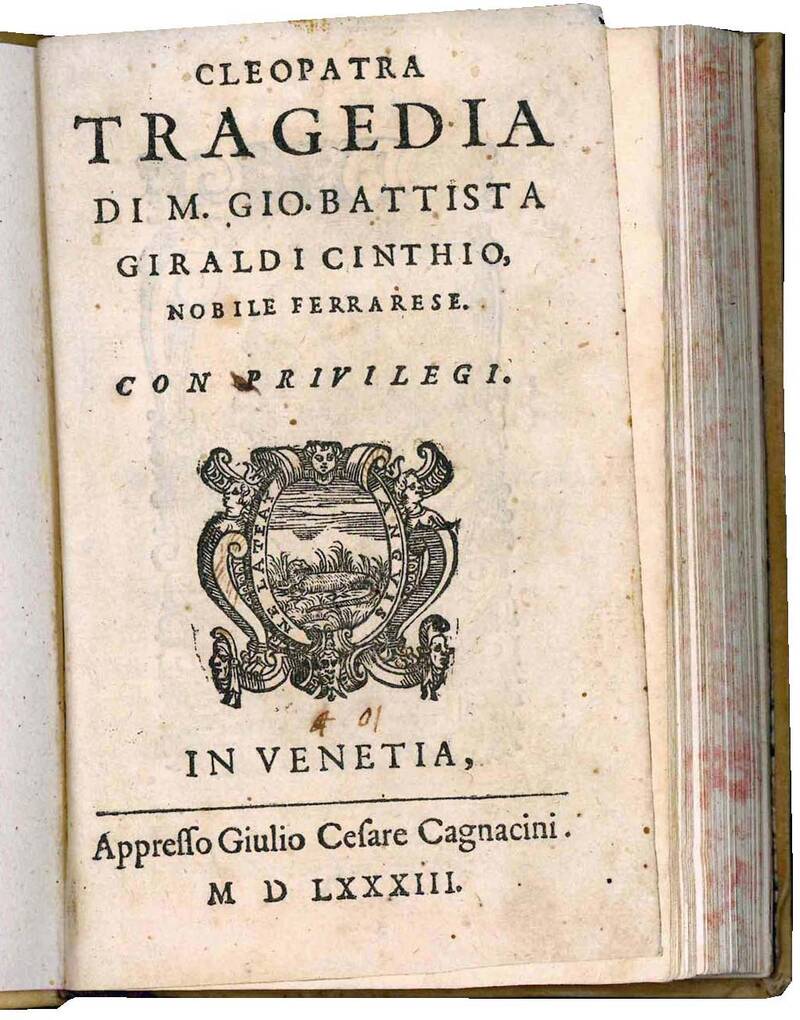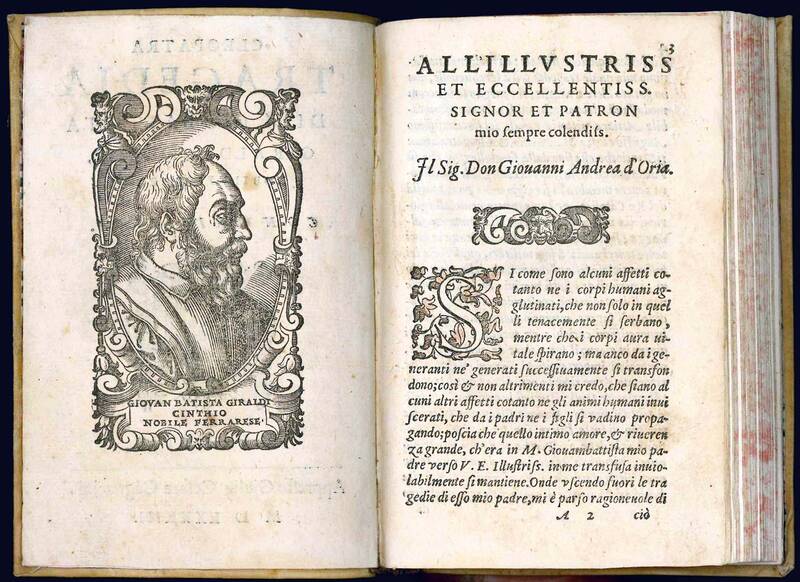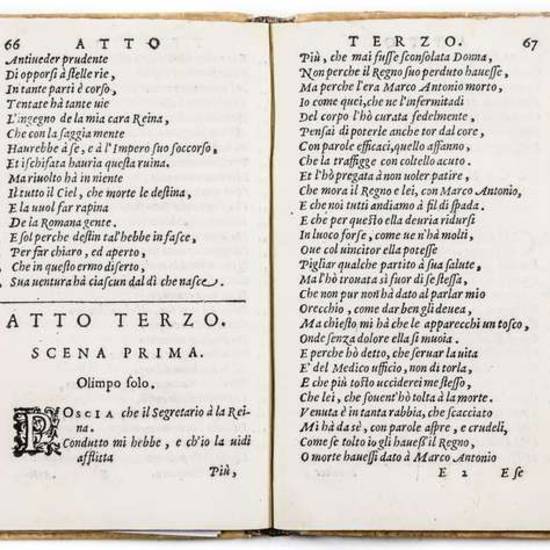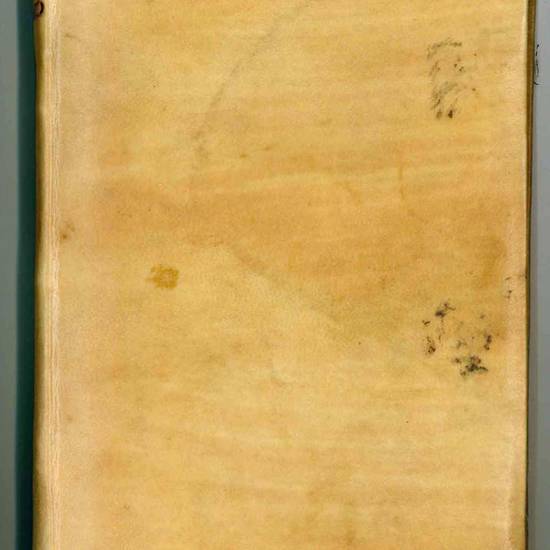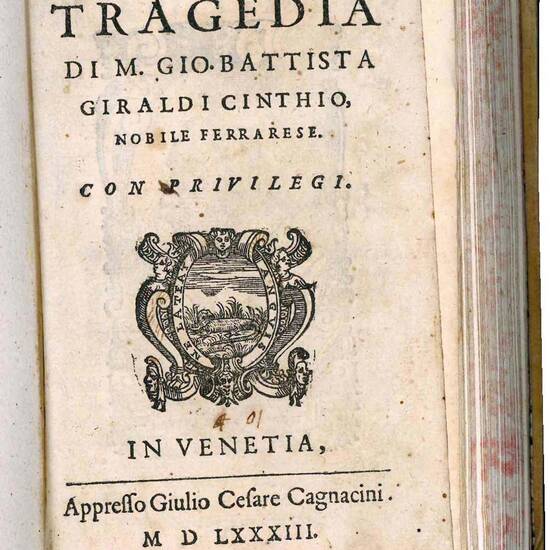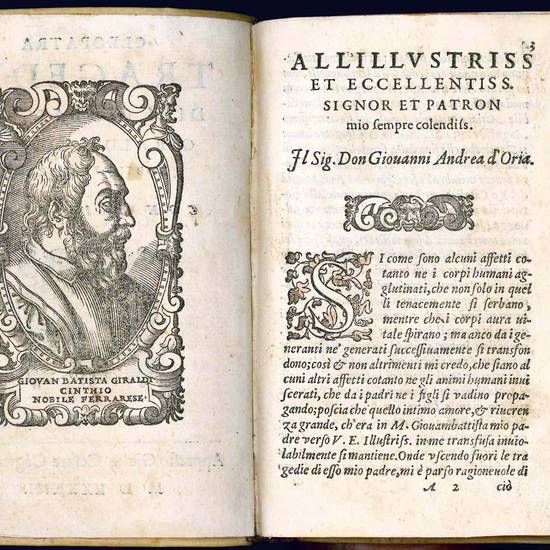8vo (142x92 mm). 127, [1] pages. Collation: A-H8. Woodcut printer's device on the title page. Woodcut decorated initials. Full-page woodcut author's portrait at the title-page verso. Some light foxing, first leaves slightly browned. Contemporary vellum over boards, inked title on spine, marbled pastedowns, red edges.
First edition of this tragedy, which was commissioned by Ercole II d'Este and first performed in 1543. It opens with a dedication by Celso Giraldi to Giovanni Andrea d'Oria.
With the exeption of Orbecche, performed in 1541 and printed by Manutius in 1543, all of Giraldi's tragedies were published posthumously in 1583 by Giulio Cesare Cagnacini, each with a dedication by Giraldi's son Celso. They were sold either separately (all including a portrait of the author) or as a single volume with a general dedication to Alfonso II d'Este. The other Giraldi's tragedies printed by Cagnacini in 1583 were: Orbecche, Altile, Didone, Antivalomeni, Cleopatra, Arrenopia, Euphimia, Epitia, and Selene.
Giraldi was a key figure in the history of Renaissance drama. His most striking innovation (the happy ending to tragedy) did not meet with much approval amongst contemporary dramatists, and it was left to a later dramatist and theorician, Giambattista Guarini, to formulate the theory of tragicomedy that was to prove so influencial, not only in Italy, but also in England, France, and Spain. There is no conclusive evidence that Shakespeare was familiar with Giraldi's dramatic oeuvre; however, comparison was made between his Anthony and Cleopatra and Giraldi's Cleopatra, and between Measure for Measure and Epitia (cf. P.R. Horne, The Tragedies of Giambattista Cinthio Giraldi, Oxford, 1962, pp. 2-3).
Giovanni Battista Giraldi, surnamed Cinzio, was born at Ferrara and educated at the university of his native city. He became professor of natural philosophy in 1525, and, twelve years later, succeeded Celio Calcagnini in the chair of rethoric. He also acted as private secretary to Ercole II and Alfonso II d'Este. Apart from his tragedies, he is mainly remebered for his prose work Hecatommithi, a collection of tales in the manner of Boccaccio and Bandello, which, directly or indirectly funished the plot for several of Shakespeare's plays.
M. Bregoli Russo, Renaissance Italian Theater, Firenze, 1984, p. 83, no. 286; Edit 16, 21281; Allacci, 199; Gamba, 1435; Clubb, 466.
[5734]

